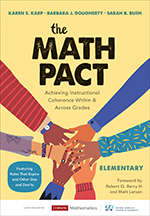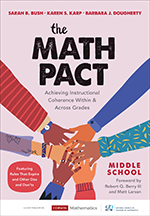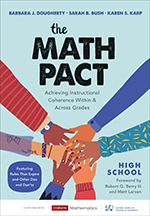The First Days of School and All Year Long
Read more on how to implement these tips:
Get to know your students. Building strong relationships with your students is crucial for creating a positive and inclusive learning environment. Take the time to get to know your students as individuals, beyond their academic abilities or grades. Ask open-ended questions during one-on-one conferences or small group discussions to learn about their interests, hobbies, and strengths. Use icebreaker activities or games to encourage students to share about themselves and their peers. Observe students' behaviors, body language, and tone of voice to better understand their communication styles and needs. Celebrate students' diverse backgrounds, cultures, and identities by incorporating their experiences and perspectives into lesson plans and discussions. By doing so, you can tailor your teaching approach to meet the unique needs of each student, create a safe and inclusive learning environment that values diversity and promotes equity, foster a sense of belonging and
community among students, and develop stronger relationships with students, which can lead to improved academic performance and social-emotional growth.
Become an advocate for mathematics. Celebrate the diverse mathematical talents of your students! Showcase their work on a bulletin board that rotates to feature different grade levels and student projects. Partner with other teachers to integrate math concepts across subjects. Organize events like “Family Math Night” where students can share their learning journeys with families in an engaging way. Consider inviting local media to cover these events, highlighting the creativity and success of your inclusive math program. This not only celebrates student achievement but also demonstrates the value of a strong math program to the community, potentially attracting more resources and support.
Take notes. Make a place for yourself where you can jot down observations quickly throughout the day. Consider using digital tools, such as note-taking apps or online platforms, to organize and store notes. This can help reduce paper clutter and make it easier to share notes with colleagues. Informal observations early in the year can be helpful further down the road if you have a student who may have a special need or is displaying behavior that continues to disrupt the class. Also, document what went well and what could be improved each time you use a lesson, and more importantly, stay organized - so that you can find and consider the notes next time around! Date each observation.
Use email for parent contacts whenever possible. Consider using digital communication tools, such as school messaging apps or email platforms, to facilitate communication with parents and guardians. This can help reduce barriers and increase accessibility for families with diverse needs. This saves time and makes it easy to keep a "paper" trail. Parents appreciate the ease of contact. Talk to parents/guardians early on—establish a positive relationship before there are problems. Send them a positive note about something you notice about their student. Those positives are like money in the bank when you do encounter a discipline problem later in the year. And, from an organizational point of view, these upbeat notes encourage the practice of communicating by email. Be mindful of cultural and linguistic differences when communicating with families. Use clear and concise language, provide translations when necessary, and be responsive to diverse communication needs.
Keep seating charts handy. Consider using digital seating charts or online tools to organize student seating arrangements. This can help reduce paper clutter and make it easier to adjust seating arrangements as needed. This will aid you in taking attendance in a split second as students are completing the 'class starter', a task written on the board to get their minds into gear. It will be the secret to knowing everyone's names instantly. The rosters can also be helpful for fire drills and are invaluable for substitute teachers. Create a flexible and inclusive seating arrangement that accommodates diverse student needs. This can include providing options for students with disabilities, mobility issues, or other needs.
Take a leadership role in mathematics by offering support. Start a professional reading group to discuss mathematics teaching and learning. Schedule a time (even lunch hour) once a month to meet with other math teachers in your school to share ideas and ask each other questions. Involving beginning teachers in a mathematics-related reading group would help everyone involved grow as a teacher. Involving veteran teachers will allow them fresh ideas and an opportunity to mentor. Organize professional development opportunities that focus on diversity, equity, and inclusion in mathematics education. This can include workshops on culturally responsive teaching practices, math education for diverse student populations, or promoting equity in math education. Center student voices and experiences in math education by collaborating with students to design math projects that are relevant, engaging, and inclusive.
 Know your discipline/classroom management strategies. Establishing a strong foundation at the beginning of the school year is crucial for creating an organized and respectful classroom environment. Take time to think about what is and is not acceptable in your classroom. What kinds of things are NOT okay? How are you going to handle them? Think about what kind of learning environment you would like to create for and with students. On the first day, work as a class to set expectations for behavior and work habits. Chart, model, practice, and reinforce behavior expectations. Keep it simple. Having a long list of rules may be difficult to monitor and enforce. Use restorative justice practices or social-emotional learning strategies to promote positive classroom management. This can include building trust, empathy, and understanding among students. Be proactive and responsive to student needs and use culturally responsive practices, such as acknowledging and addressing microaggressions, to create a safe and inclusive learning environment.
Know your discipline/classroom management strategies. Establishing a strong foundation at the beginning of the school year is crucial for creating an organized and respectful classroom environment. Take time to think about what is and is not acceptable in your classroom. What kinds of things are NOT okay? How are you going to handle them? Think about what kind of learning environment you would like to create for and with students. On the first day, work as a class to set expectations for behavior and work habits. Chart, model, practice, and reinforce behavior expectations. Keep it simple. Having a long list of rules may be difficult to monitor and enforce. Use restorative justice practices or social-emotional learning strategies to promote positive classroom management. This can include building trust, empathy, and understanding among students. Be proactive and responsive to student needs and use culturally responsive practices, such as acknowledging and addressing microaggressions, to create a safe and inclusive learning environment.
Ask the principal to purchase an NCTM membership. Ask the principal to purchase memberships for the teachers at your school. NCTM offers discounts on membership rates, depending on the size of your group. Memberships include a subscription to a journal, reduced registration fees for all teachers in the school at all conferences, and 20% off
NCTM educational materials and special products for Essential members and 30% off for Premium members. This is a great way to strengthen the school mathematics program with access to high-quality educational materials and professional development opportunities.
Make mathematics a priority within your classroom. Plan to integrate mathematics with other subject areas. Integrating mathematics with other subject areas promotes interdisciplinary learning and deeper understanding. One way to get started is to collect children's literature that highlights mathematical concepts, such as geometry, patterns, or measurement. This can help spark students' interest and curiosity in math. To make connections to other subjects, try analyzing data from science, social studies, or language arts to create real-life problem-solving situations. For example, use scientific data to calculate the area of a garden or the impact of climate change on a local ecosystem. Or use social studies data to analyze the growth of a city or the impact of economic decisions on a community. By integrating mathematics with other subjects, you can create a more cohesive and engaging curriculum that shows students how relevant and valuable math is in everyday life. See the tips on Using Current Events and Real Data.
Focus on what matters most. Embrace the freedom to focus on what truly matters. As a teacher, your time is valuable, and it's essential to prioritize what drives the most impact for your students. Regularly review your workload and identify tasks that can be streamlined or delegated, freeing up time for more meaningful and effective strategies. By focusing on what matters most, you'll not only improve student outcomes but also cultivate a greater sense of fulfillment and well-being.
Related Publications:


